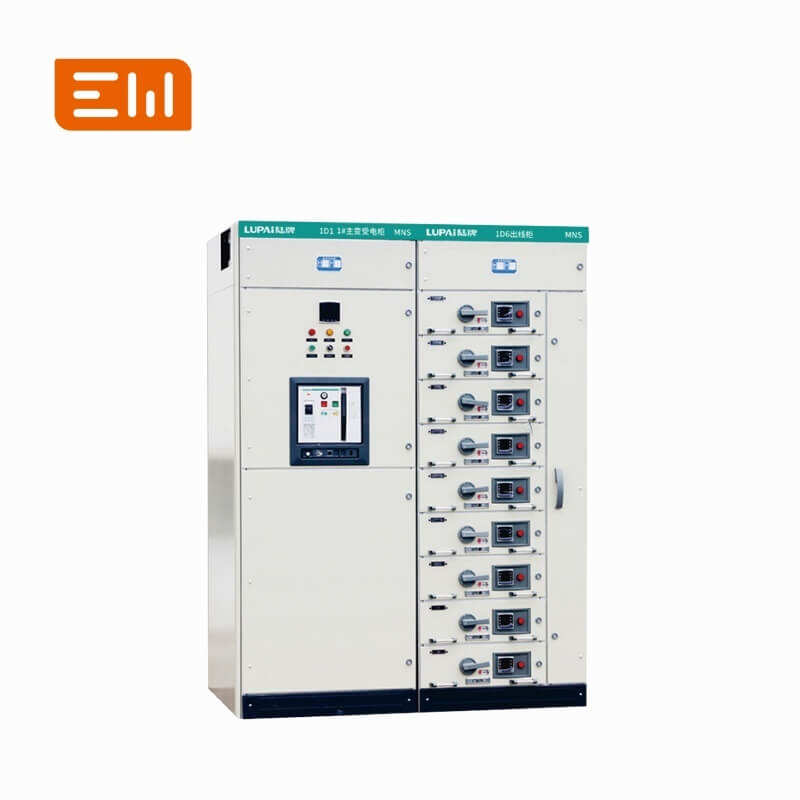Switchgear vs Transformer: Key Differences for Power System Design
Switchgear and transformers appear side by side in substations and distribution rooms, yet they perform fundamentally different roles. Understanding how each component functions helps engineers optimize protection, reliability, and lifecycle cost.
Quick Definition: Switchgear comprises protective devices—such as breakers, disconnectors, and relays—that control and isolate electrical circuits. A transformer transfers electrical energy between voltage levels through electromagnetic induction.
Key Project Takeaways
- Switchgear manages circuit protection and control, while transformers handle voltage transformation and load balancing.
- Standards like IEC 62271 (switchgear) and IEC 60076 (transformers) define distinct performance and safety requirements.
- Enwei Electric offers integrated solutions combining switchgear, transformers, and substations for cohesive projects.
- Comparative evaluation considers voltage class, insulation method, maintenance, and digital monitoring capabilities.
Functional Roles in Power Systems
Transformers adjust voltage levels to minimize losses during transmission and provide usable voltages for end users. They are passive devices without inherent protection capability. Switchgear, conversely, detects faults and safely interrupts current to protect transformers, cables, and loads.
During a fault event, switchgear isolates the affected circuit, protecting the transformer from damage. Without coordinated switchgear, transformers would experience excessive fault currents that degrade insulation and reduce lifespan.
Standards and Compliance Comparison
Designers rely on specialized standards for each equipment category:
- IEC 62271-200 — Defines requirements for metal-enclosed medium-voltage switchgear. Source: International Electrotechnical Commission
- IEC 60076-1 — Establishes general requirements for power transformers, including temperature rise and dielectric tests. Source: International Electrotechnical Commission
- IEEE C37 Series — Covers switchgear testing and performance in North America. Source: IEEE Standards Association
By referencing these standards, engineers ensure both switchgear and transformers meet legal and operational expectations.
Switchgear vs Transformer Design Matrix
| Criteria | Switchgear | Transformer |
|---|---|---|
| Primary Function | Protection, switching, isolation | Voltage transformation, impedance control |
| Key Components | Breakers, contactors, relays, busbars | Core, windings, insulation, tap changer |
| Insulation Medium | Air, SF₆, solid, or vacuum | Mineral oil, ester, or resin (dry-type) |
| Maintenance Focus | Breaker contact wear, relay testing, mechanism lubrication | Oil quality, winding temperature, tap changer servicing |
| Digital Monitoring | Breaker counters, partial discharge sensors, SCADA interfaces | Temperature probes, dissolved gas analysis, load logging |
Integration Strategies for Modern Projects
Optimal performance arises when switchgear and transformers are designed in tandem. Protection settings derived from transformer impedance ensure selective tripping. Digital monitoring platforms correlate transformer loading with breaker operations, enabling data-driven maintenance.
Prefabricated substations consolidate both components, delivering plug-and-play solutions for urban developments, industrial campuses, and renewable plants. Integrated engineering reduces installation time and simplifies commissioning. Coordinated digital dashboards provide a single pane of glass where operators monitor breaker status, transformer temperature, and alarms in real time.
Cost and Lifecycle Considerations
The total cost of ownership differs between switchgear and transformers. Switchgear expenditures revolve around breaker maintenance, firmware updates, and periodic testing. Transformer lifecycle cost is dominated by energy losses, cooling performance, and oil management. Evaluating both through net present value calculations reveals the financial benefit of higher-efficiency transformers and digitally enabled switchgear.
Application Scenarios
Industrial facilities: Medium-voltage switchgear feeds step-down transformers powering MCCs and process equipment. Coordinated studies manage high fault levels and motor starting currents.
Commercial complexes: Pad-mounted transformers supply low voltage switchboards, while switchgear monitors demand charges and integrates backup generators.
Renewable plants: Step-up transformers connect to collector systems with switchgear providing isolation, synch-check, and protection interfaces.
Data centers: Redundant transformers pair with dual-feed switchgear, offering concurrently maintainable architectures and advanced monitoring.
Maintenance Outlook
Switchgear maintenance centers on breaker inspection, insulation cleaning, and relay calibration. Predictive analytics track operation counts and detect partial discharge. Transformers require oil analysis, thermography, and tap changer servicing. Combining maintenance data reveals correlations between breaker operations and transformer loading, guiding asset optimization.
Enwei Electric’s Integrated Offerings
Enwei Electric manufactures medium- and low-voltage switchgear (https://www.enweielectric.com/products/switchgear) and oil-immersed transformers (https://www.enweielectric.com/products/transformers/oil-immersed-transformers). Customers can combine these with prefabricated substations (https://www.enweielectric.com/products/substations) for cohesive distribution projects.
Engineering FAQ: Switchgear vs Transformer
Can switchgear replace a transformer?
No. Switchgear handles switching and protection, while transformers change voltage levels. Both are required for full distribution systems.
How are switchgear and transformer ratings coordinated?
Engineers use short-circuit and load-flow studies to select breaker interrupting ratings and transformer impedance that complement each other.
Why work with Enwei Electric for both technologies?
Enwei Electric delivers matched switchgear and transformer solutions with unified engineering support, simplifying specification and maintenance.
Call to Action: Build Integrated Power Systems with Enwei Electric
Switchgear and transformers function best as a coordinated system. Engage Enwei Electric to design, manufacture, and support both components with unified digital monitoring. Contact Enwei Electric today to streamline your next distribution project.
Project Applications
See real-world deployment examples and gallery highlights across Enwei Electric product hubs:
- Transformer solutions for distribution and industrial projects.
- Switchgear portfolios covering medium- and low-voltage control rooms.
- Current transformer ranges supporting precision metering and protection.
- Prefabricated substations that integrate transformers, switchgear, and panels.
Table of Contents
- Switchgear vs Transformer: Key Differences for Power System Design
- Key Project Takeaways
- Functional Roles in Power Systems
- Standards and Compliance Comparison
- Switchgear vs Transformer Design Matrix
- Integration Strategies for Modern Projects
- Cost and Lifecycle Considerations
- Application Scenarios
- Maintenance Outlook
- Enwei Electric’s Integrated Offerings
- Engineering FAQ: Switchgear vs Transformer
- Call to Action: Build Integrated Power Systems with Enwei Electric
- Project Applications


